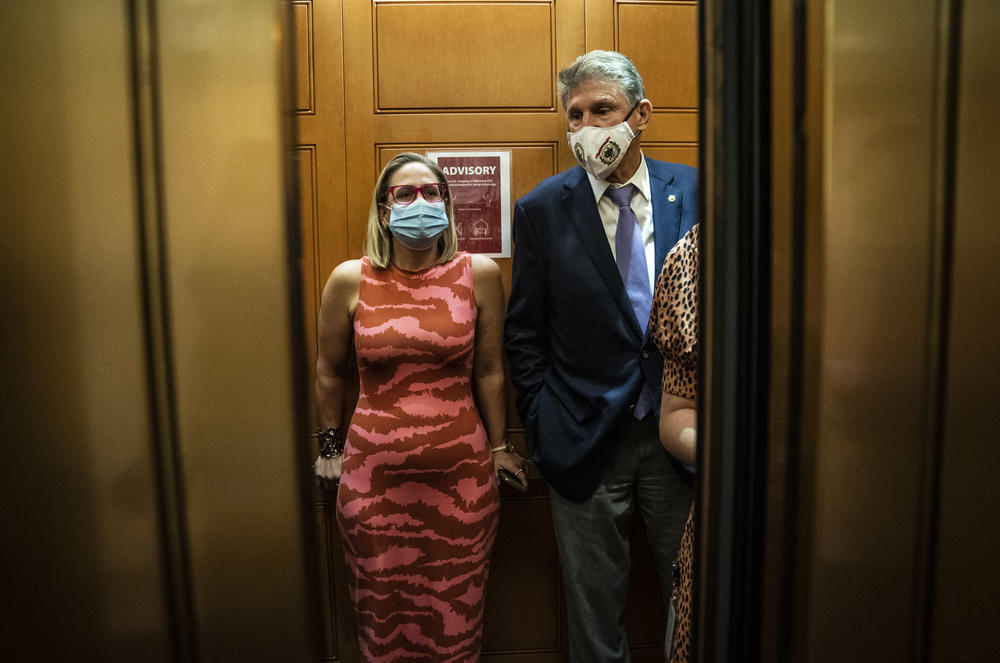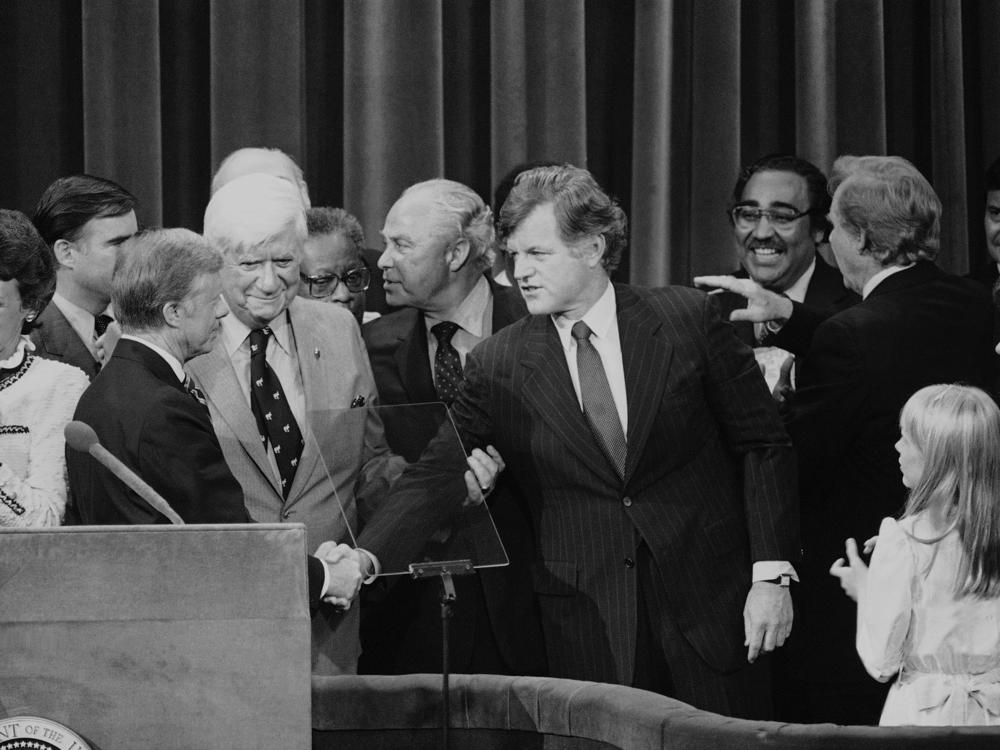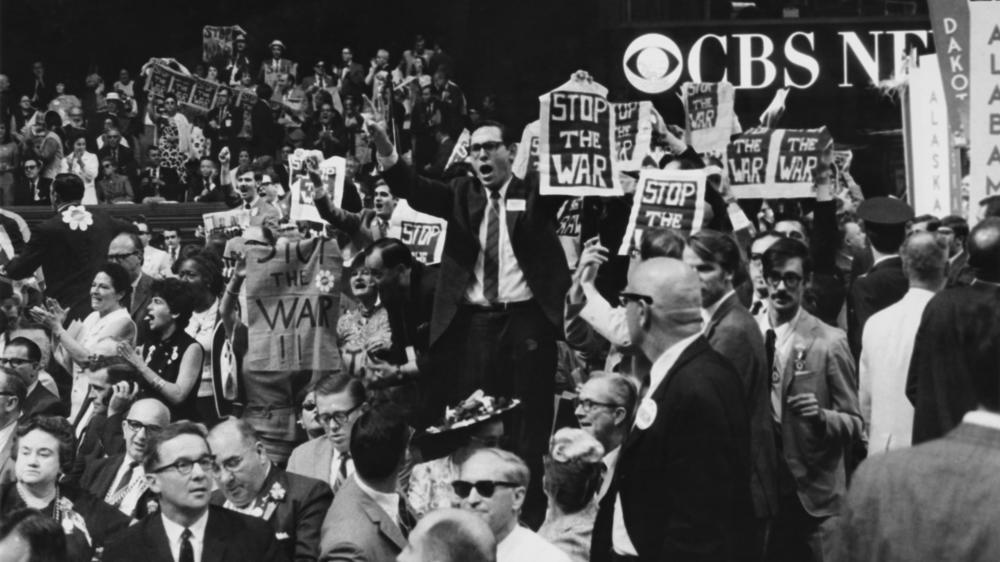Section Branding
Header Content
Democrats are having a unity problem. That's familiar territory for them
Primary Content
Democrats in Washington are divided.
You've no doubt read and heard news reports that detail the recent infighting, as headline writers for weeks have been digging to find synonyms for discord, disarray, dissent and disagreement.
The party is portrayed as split, on the outs and at odds.
And in the game of Washington power politics, party unity matters. Disunity kills.
In recent months it has hobbled Democrats — who are the nominal majority in an almost perfectly divided House and Senate — in their efforts on everything from fiscal policy and immigration to climate change and voting rights. President Biden and the progressives who now dominate his party in Congress are struggling to win over or compromise with the last few centrist-moderate colleagues in their ranks. If they fail, they cannot govern.
So their internal battle is unquestionably news.
But it is not, in any sense, new.
In fact, why would anyone expect the Democrats to act in any other way?
Throughout its history, the party has featured dissent and even radical differences of viewpoint. It has been defined by these internal contrasts and conflicts as often as by its achievements.
Division has played out for generations
It has often been easier to understand the Democratic Party as a series of shifting coalitions rather than a cohesive, disciplined unit. That long-term tolerance for turmoil may even help to explain how this party — or at least this party label — has stuck around so long. At two centuries plus, these Democrats are the oldest political party still functioning, not just in the U.S. but in the world.
The divisions have at times played out in marquee presidential races, as when the liberal Sen. Edward Kennedy of Massachusetts challenged the re-nomination of Jimmy Carter, the more centrist Georgia Democrat who happened to be the incumbent president in 1980.
More often, the tensions that permeate the party's past have been part of the ordinary, daily business of Congress. For generations it was understood that in Congress, the Southern Democrats would go their own way when they felt their regional or ideological interests were at stake.
So stark was this reality that for decades Congressional Quarterly tallied and reported votes in Congress for three parties: Republicans, Southern Democrats and National Democrats. When a majority of members in each of the first two categories agreed, CQ labeled it "the Conservative Coalition."
So how did these divided Democrats ever get things done?
The problem for Biden and the Democrats of the current Congress is not that they are so fractious but that there are so few of them. In a 50-50 Senate, even one defector can deal a fatal blow. In a House where the majority's margin of error is three votes, the intraparty balancing act is a high-wire acrobatic trick of the first order.
Activists pressuring Biden to "go big" continually refer to the Democrats' "total control of Washington," when in reality there is no such thing. Given the narrow-to-nonexistent margins, the idea of control assumes every Democrat would vote in lockstep, and that has almost never been the case.
At those fleeting moments in history when the Democrats have united and thrived in Congress, they have done so by uniting urban and rural voters across the regional lines. But these interludes of cooperation, symbolized by alternating House Speakers from Texas and Massachusetts (the "Austin-Boston axis"), have always been highly pragmatic.
It was understood that one side would support the other in exchange for the protection of certain overriding concerns. For Southern Democrats, the paramount concern was segregation.
That bargain worked in the New Deal years of the 1930s, when Franklin D. Roosevelt enjoyed huge majorities in both House and Senate that had votes to spare. It was still the order of the day when Lyndon B. Johnson stepped into the presidency in place of the assassinated John F. Kennedy.
With Republican help, Johnson broke the Dixiecrats' filibuster against the Civil Rights Act in 1964 and then got the Voting Rights Act to his desk for signature the following year. Also in that year, Johnson's big multi-regional majorities had votes to spare in passing Medicare, Medicaid and a host of other social spending programs.
No Democratic president has had such support in Congress since. But when Bill Clinton took office in 1993 he had far wider margins in House and Senate than Biden has now. Yet they were not enough to deliver on much of his agenda, and control of both chambers was lost in the 1994 midterms.
Years later, Barack Obama would be inaugurated with restored and even larger majorities in the House and Senate than Clinton's. Those majorities managed to pass the Affordable Care Act. But the bruising first two years cost Obama's party control of the House in the midterms of 2010, and Democrats' waning appeal in the nation's interior cost them control of the Senate in the midterms of 2014.
At their historic high tides, Democrats were not really more united than they are now. They may have been less so. The difference was they had enough votes to abide their disunity and still prevail.
For Democrats, it's been a long story about contradictions
When journalist Jules Witcover penned a 700-page popular history of the Democrats in 2003, he called it Party of the People, using what has long been the party's favorite self description. But he kicked off the narrative with an equally famous joke: "I don't belong to any organized political party. I'm a Democrat."
That line was first delivered in the wise-cracking twang of Will Rogers, an Oklahoma cowboy who became a popular humorist and movie actor. On occasion, Rogers would elaborate with: "Democrats never agree on anything, that's why they're Democrats. If they agreed with each other, they'd be Republicans."
Such lines always got appreciative laughter and applause. Perhaps this loose and accommodating character is fitting, given the party's origins in the sometimes-contradictory convictions of Thomas Jefferson. A Virginia planter of exceptional intellect, Jefferson, declared his "eternal hostility against all forms of tyranny over the mind of man." Yet, like George Washington before, his Virginia plantation ran on the labor of hundreds of slaves.
Jefferson was the first president associated with what became known as the Democratic Party. Before that, he and his confreres were simply the "anti-Federalists" or, for a time, the Democratic-Republicans.
But Jefferson himself was no fan of the party concept. "If I could not go to heaven but with a party," he once confided, "I would not go there at all."
Jefferson prided himself on an agrarian ideal of society, believing it morally superior to life in cities. He was followed in the White House by two more Virginia planters who had enslaved workers, James Madison and James Monroe, making it four of the first five presidents who did so. The seventh, Democrat Andrew Jackson, also relied on slavery.
Soon the Democratic Party would be known as "the party of Jefferson and Jackson," and in some states it continued to call its annual party events "Jefferson-Jackson dinners" well into the 2000s. But by then the party had long since shifted its base to the cities, to which most of the population had moved.
A party that grew and divided with America
In the 1800s, as the young Republic grew, the arrival of immigrants from Germany and Ireland and elsewhere in Europe introduced a new strain of Democrats who quickly came to matter in the politics of their cities and states. They were especially important to the growth of the cities in the Northeast and Midwest.
The Democratic Party was the place where the nation's E pluribus unum concept was put to the test. And while the party, like the country as whole, idealized the "melting pot" notion in the abstract; in practice the melting was often strained.
In addition to the North-South regional rivalry, the Democrats had to deal with deep and competing devotion to different definitions of Christianity. The party began with ties to the Protestant denominations that were well established in the South and in rural America, but it was soon closely associated as well with Catholicism in the cities. The 20th century political scientist Richard Scammon liked to say that the two most important events in any American election year were the Civil War and the Reformation.
The sectarian intraparty tensions have eased somewhat in recent decades, largely because Southern white voters have absented themselves — gravitating to the Republicans, especially in rural precincts. Many departed their ancestral party after it backed the civil rights bills and embraced other movements toward social change. Other older voters in the South brought their GOP habits with them when they migrated from other parts of the country.
But the historic differences have never gone away, and it is still possible to find Democratic politicians working an older Democratic moderate-to-conservative playbook. This may seem mandatory to them in states that have become highly Republican in voting patterns, such as West Virginia.
Once a reliably Democratic bastion, West Virginia twice delivered crushing majorities for Donald Trump and has but one Democrat left in Congress – Joe Manchin, who has been the principal stumbling block for party unity in the Senate.
Other Democrats currently at odds with their party leadership have their own constituency stories to tell. Sen. Kyrsten Sinema of Arizona, once considered a liberal activist, has become highly conscious of her state's economic interests and the past success of Arizona senators who billed themselves as independent centrists and party mavericks – especially the late Republican John McCain.
Among the House Democrats who have vowed to resist parts of the Biden program are several from Texas and elsewhere with ties to the traditional energy industry in their districts. They have questioned Biden's moves away from fossil fuels and their party's passion for renewables.
Such members may regard the immediate interests of their constituencies, including donors as well as voters, as preeminent. They are willing to bear, as a badge of independence, the irritation and wrath of their party leaders and colleagues in Washington.
Students of party history can only say: Twas ever thus.
Copyright 2021 NPR. To see more, visit https://www.npr.org.
Bottom Content



